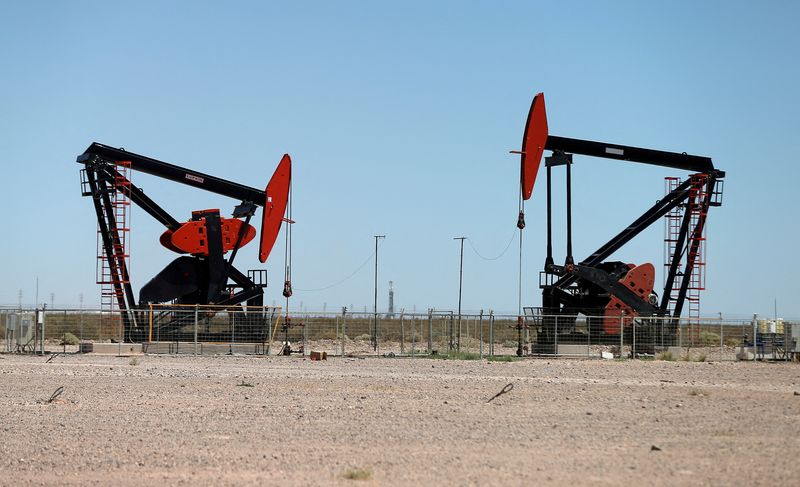Oil prices steady as investor focus shifts to demand outlook
2023.04.03 23:42

© Reuters. FILE PHOTO: Oil pump jacks are seen at the Vaca Muerta shale oil and gas deposit in the Patagonian province of Neuquen, Argentina, January 21, 2019. REUTERS/Agustin Marcarian
TOKYO (Reuters) – Oil prices steadied in early Asian trade on Tuesday after OPEC+ plans to cut more production jolted markets the previous day, with investors’ attention shifting to demand trends and the impact of higher prices on the global economy.
futures fell 2 cents to $84.91 a barrel by 0029 GMT. U.S. West Texas Intermediate (WTI) crude futures were trading at $80.47 a barrel, up 5 cents.
Both benchmarks jumped more than 6% on Monday after the Organization of the Petroleum Exporting Countries (OPEC) and allies including Russia, collectively known as OPEC+, rocked markets with Sunday’s announcement of plans to lower output targets by a further 1.16 million barrels per day (bpd).
The latest pledges bring the total volume of cuts by OPEC+ to 3.66 million bpd including a 2 million barrel cut last October, according to Reuters calculations – equal to about 3.7% of global demand.
“The buying spree from the OPEC+ output cut has calmed down and market attention has shifted to the future demand outlook,” said Hiroyuki Kikukawa, president of NS Trading, a unit of Nissan (OTC:) Securities.
“In the short term, demand is expected to rise for the summer driving season, but higher oil prices may intensify inflationary pressures and prolong interest rate hikes in many countries, which could dampen demand,” he said. Kikukawa noted the impact could also reignite concerns about the global financial industry.
The OPEC+ production curbs led most analysts to raise their Brent oil price forecasts to around $100 per barrel by year-end. Goldman Sachs (NYSE:) lifted its forecast for Brent to $95 a barrel by the end of this year, and to $100 for 2024.
The news, however, added to investor worries about higher costs for businesses and consumers, raising fears that an inflationary jolt to the world economy from rising oil prices will result in more rate hikes.
Market watchers have been trying to gauge how much longer the U.S. Federal Reserve may need to keep raising interest rates to cool inflation, and whether the U.S. economy may be headed for recession.
U.S. manufacturing activity slumped to the lowest level in nearly three years in March and could decline further on tighter credit and higher borrowing costs.








